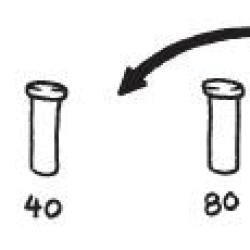Source Institutions
Source Institutions
Add to list Go to activity
Activity link broken? See if it's at the internet archive

Computers are often used to put lists into some sort of order—for example, names into alphabetical order, appointments or e-mail by date, or items in numerical order. In this activity learners compare methods (algorithms) for sorting a collection of containers into order by mass. The main activity invites learners to compare two methods; extension activities introduce three additional sorting methods as well as ways to mathematically analyze all the methods. Background information is included.
- 10 to 30 minutes
- 45 to 60 minutes
- $1 - $5 per group of students
- Ages 11 - 14
- Activity, Lesson/Lesson Plan
- English
Quick Guide
Materials List (per group of students)
- Set of 8 small containers with lids, preferably opaque, of same size (e.g. film canisters, yogurt cups, baby food jars)
- Items to fill containers (e.g. sand, water, pennies, beans)
- Balance
- Copy of Worksheet: Sorting Weights (p29)
- Copy of Worksheet: Divide and Conquer (p30)
- Pencil
Subjects
-
Engineering and Technology
-
Technology
- Information and Communication
-
Technology
-
Mathematics
-
Algebra
- Patterns
-
Data Analysis and Probability
- Probability
-
Measurement
- Units of Measurement
-
Algebra
Audience
To use this activity, learners need to:
- see
- touch
Learning styles supported:
- Involves teamwork and communication skills
- Involves hands-on or lab activities
Other
Components that are part of this resource:
This resource is part of:
Access Rights:
- Free access
By:
Rights:
Funding Source:
- Google, Inc.
